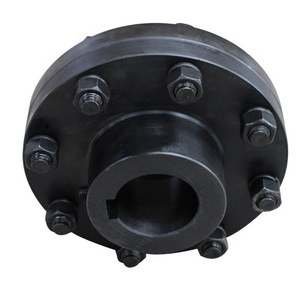Rigid coupling is a torsionally rigid coupling. Even when it is loaded, there is no rotational clearance. Even when
there is a load due to deviation, the rigid coupling still transmits torque rigidly.
If there is any deviation in the system, it will cause premature damage to the shaft, bearing or coupling, which means
that it cannot be used in a high-speed environment because it cannot compensate for the relative displacement
between the shafts caused by the high temperature generated by high-speed operation. Of course, if the relative
displacement can be successfully controlled, rigid couplings can also perform very well in servo system applications.
In particular, small-sized rigid couplings have the advantages of light weight, ultra-low inertia and high sensitivity. In
practical applications, rigid couplings have the advantages of maintenance-free, super oil resistance and corrosion
resistance.

Due to their high torque capacity, rigidity and zero-backlash performance, small-sized aluminum alloy rigid couplings
are increasingly used in the field of motion control.
Disadvantages of rigid couplings:
The flange coupling has high requirements for the neutrality of the two shafts. When there is relative displacement
between the two shafts, it will cause additional loads in the machine parts and worsen the working conditions. This is
its main disadvantage.
Advantages of rigid couplings:
However, due to its simple structure, low cost, and ability to transmit large torque, it is often used when the rotational
speed is low, there is no impact, the shaft has high rigidity, and the alignment is good. Flange coupling (also known as
flange coupling) uses bolts to connect two flange (flange) disc half couplings. The two half couplings are connected to
the two shafts with keys respectively to realize the two shafts. Connection, transmitting torque and motion. The flange
coupling has a simple structure, easy manufacturing, low cost, reliable operation, easy assembly, disassembly and
maintenance, large transmission torque, and can ensure high alignment accuracy of the two shafts. It is generally used
for stable loads. Shaft transmission with high speed or high transmission accuracy requirements. Flange couplings do
not have radial, axial and angular compensation properties. If the alignment accuracy of the two connected shafts cannot
be guaranteed during use, the service life, transmission accuracy and transmission efficiency of the coupling will be reduced,
and vibration will occur. and noise. Depending on the size of the transmitted torque, all the bolts on the rigid coupling
flange can use reamed hole bolts, or half of them can use reamed hole bolts and the other half can use ordinary bolts.
Contact: Spark Wang
Phone: 86-19932127135
E-mail: admin@rongxingcoupling.com
Add: North side of Planning 4th Road, Southern Industrial New Town, Jizhou District, Hengshui City, Hebei Province, China